 SmartTask
SmartTaskContents
Asana for Project Management: A Complete 2025 Guide
By Divya MathurJul 19, 2024

With 150,000+ paying customers, Asana is one of the most popular project management tools out there. But is it the right fit for your team?
Sure, it boasts an impressive array of features: multiple project views, customizable workflows, and automation capabilities (we’ll take a closer look at these shortly). But the real question is: Is it everything it promises to be?
Does it replace all the tools you need to manage your clients, projects, and teams?
In this post, we'll put Asana’s claims to the test.

But first, let’s quickly review the basics.
What is Asana?

Founded in 2008, Asana is a popular work management platform designed to help teams collaborate on projects.
It offers a centralized hub for task, project, and resource management, and the ability to create efficient processes (or workflows) for synchronizing work across different teams.
While its simplicity appeals to many, Asana is best suited for small and mid-sized teams or projects with clear deliverables and basic resource management needs.
P.S.: If you’re looking for a more comprehensive tool that offers resource planning, client management, and holistic time-tracking, check out this list of Asana alternatives.
Asana Project Management: Key Features
Asana offers a robust set of features for effective project management. Here are some that we really like:
Multiple Project Views: Asana offers multiple project views to cater to different work styles and project needs, including a list view, board view, calendar view, and timeline (or Gantt Chart) view.
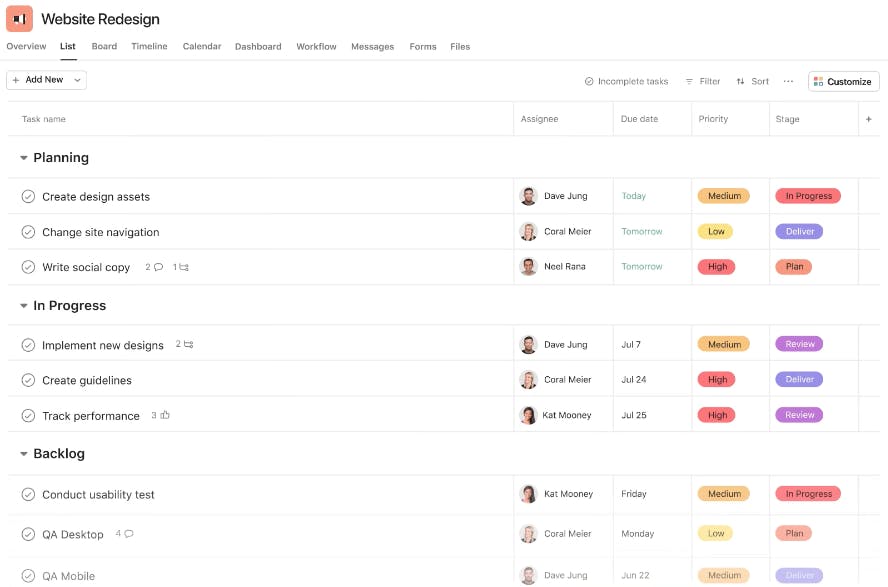
Subtasks and task dependencies: In Asana, you can create subtasks within the main tasks to break complex work into more manageable chunks. You can also determine the order in which tasks should be performed by defining relationships (or dependencies) among them.
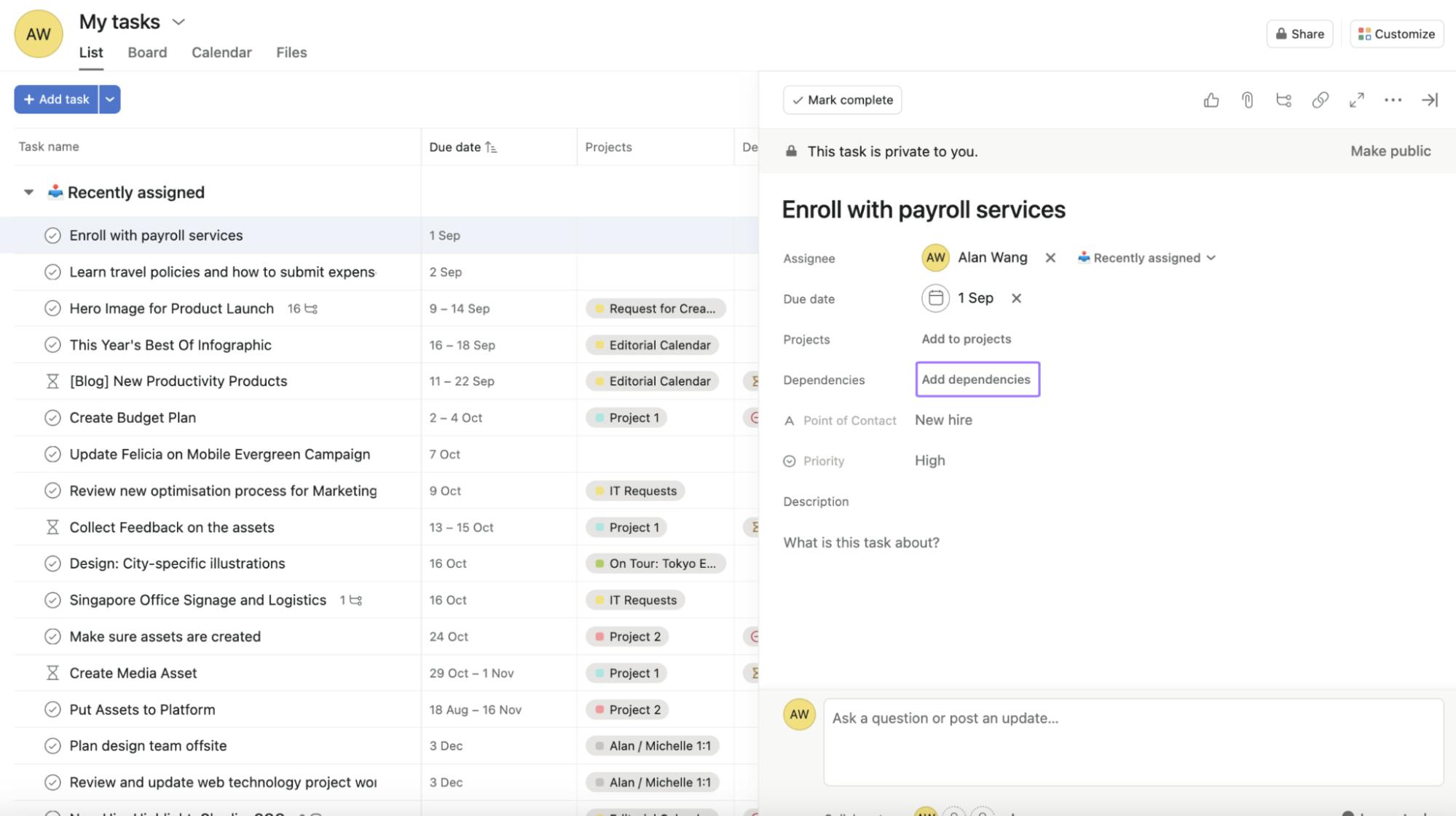
Collaboration tools: Asana allows users to collaborate on tasks using comments and share project updates via messages.
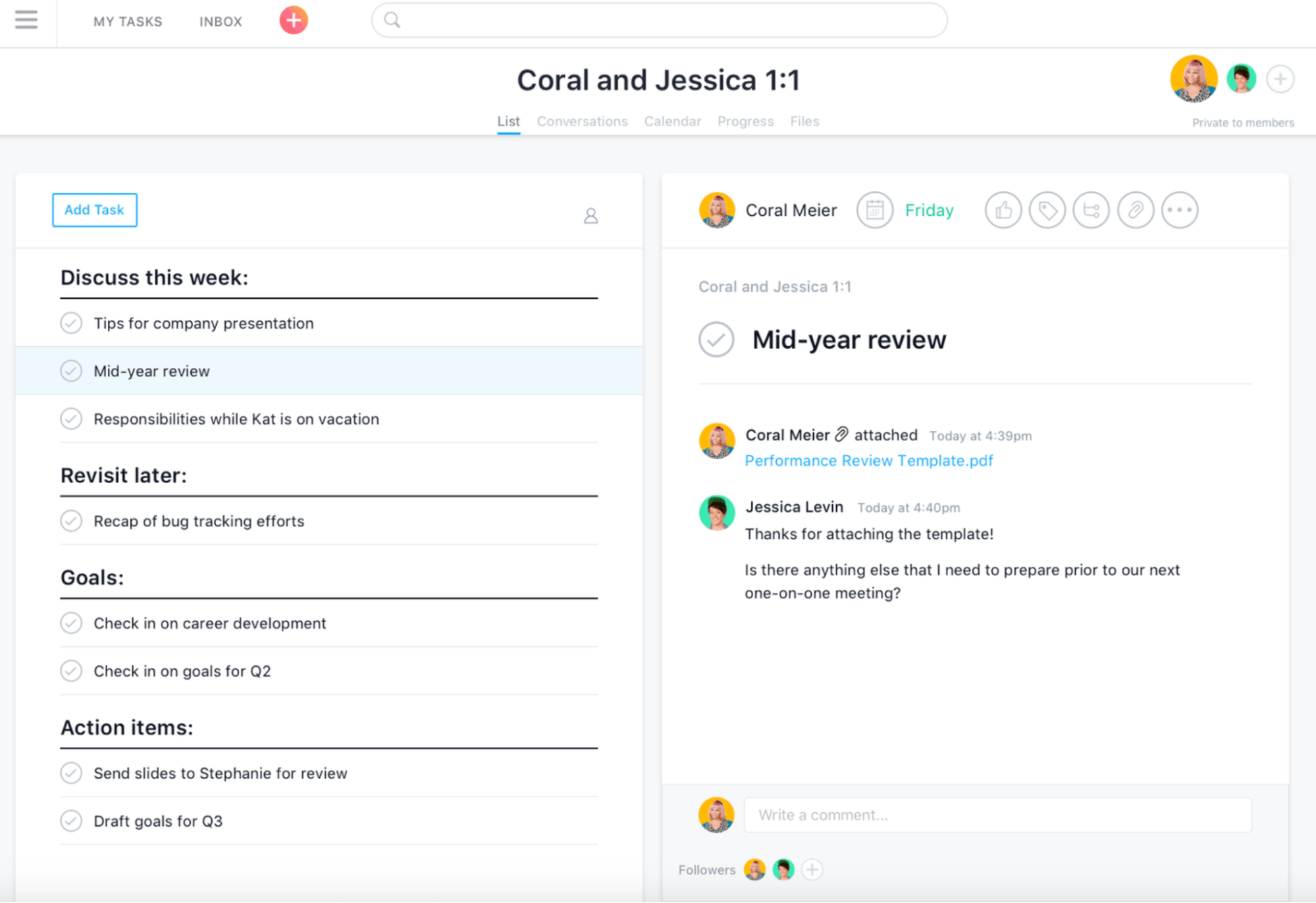
Workflow automation: Asana’s workflow automation helps you streamline repetitive tasks by setting up automatic actions based on specific triggers.
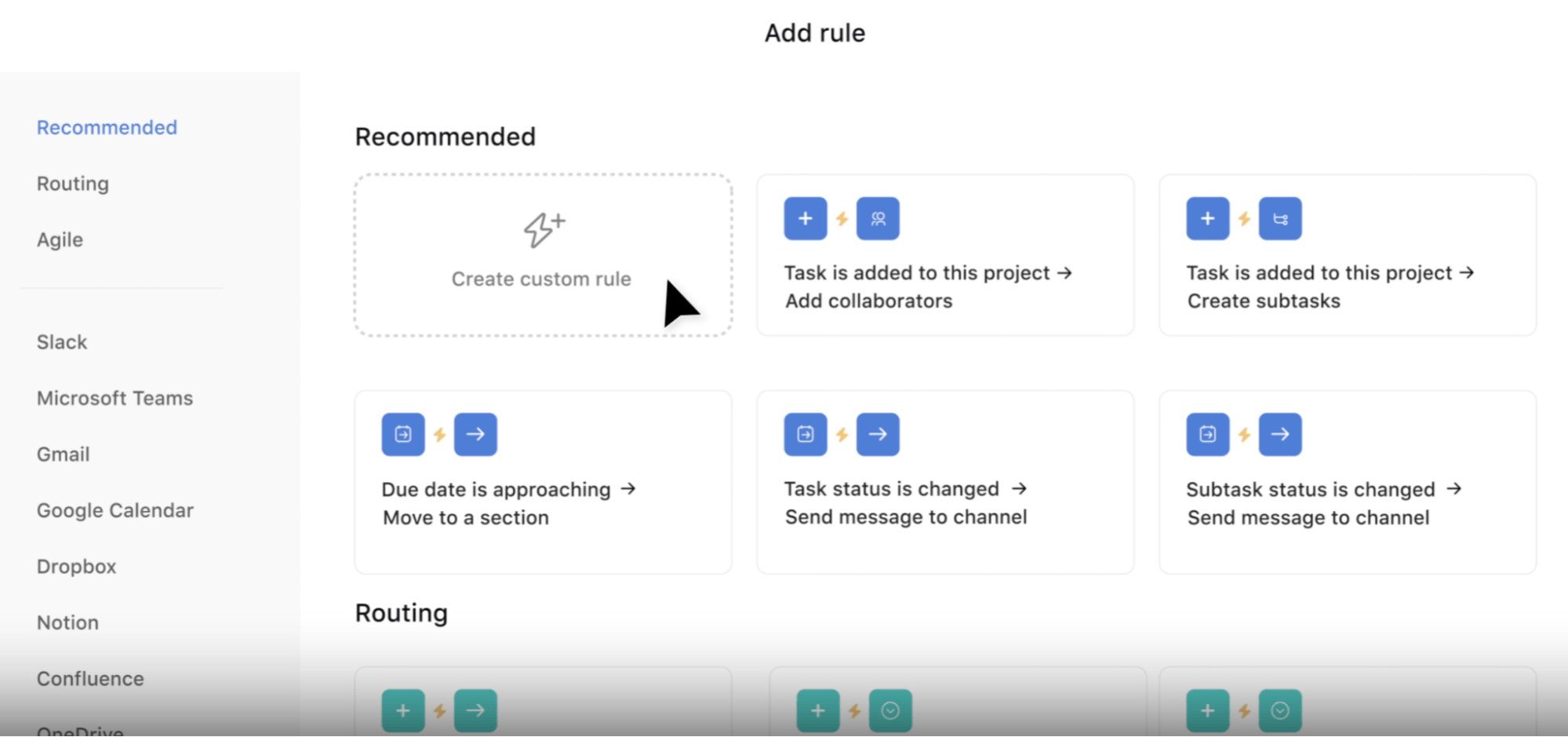
Reporting and analytics dashboards: Asana’s built-in reporting tools allow you to track project progress and team activity. You can also whip up custom charts to identify bottlenecks in your workflow and custom dashboards for real-time insights.
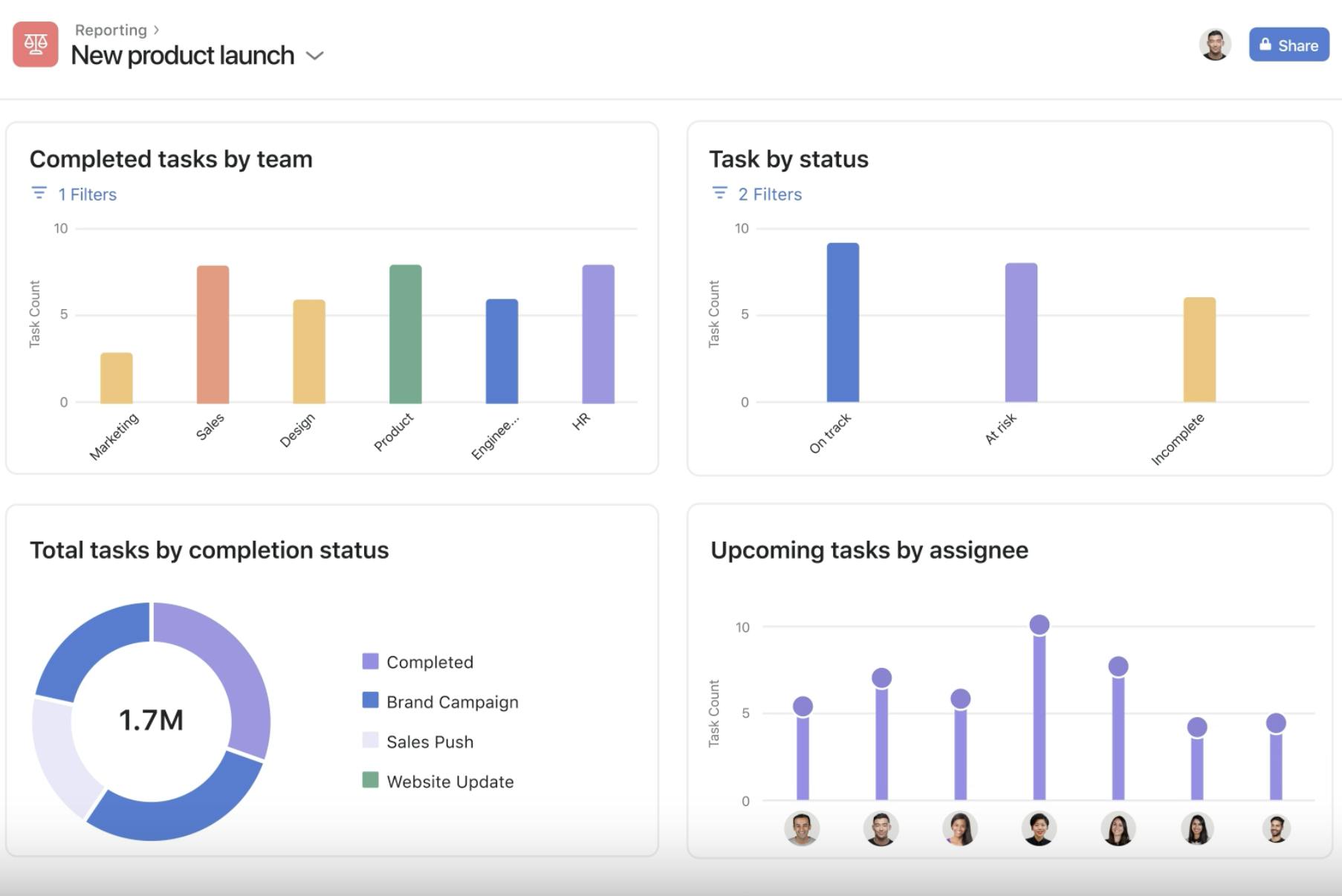
Integrations with third-party tools: Asana integrates with over 300 third-party tools to create a unified workflow. While this provides a lot of flexibility, it also has associated cost implications, as you need to pay for both Asana and the third-party tool.
Is Asana Good for Project Management?
While Asana works well for many users, it often falls short for businesses that offer specialized services to clients, such as agencies, consultancies, and high-tech teams.
Here's why:
Limited time tracking and resource management capabilities
Asana's free and Starter plans offer only basic time tracking, requiring third-party apps for more comprehensive tracking.
Even its advanced plans lack holistic time tracking reports and don't provide daily or weekly time spent summaries.
👉 Unlike Asana, SmartTask offers built-in time tracking and reporting features that help you analyze your resource usage and its cost implications. It also shares daily activity logs, where you can:
- Add time spent on a task manually or using the in-app timer
- Set task-level time estimates for project budgeting
- Add resource cost and billable rate for financial analysis
Lack of native chat and instant messaging
Asana’s overreliance on email and comments and lack of in-app chat defeats one of its main purposes: collaboration. It also necessitates the use of third-party integrations like Slack.
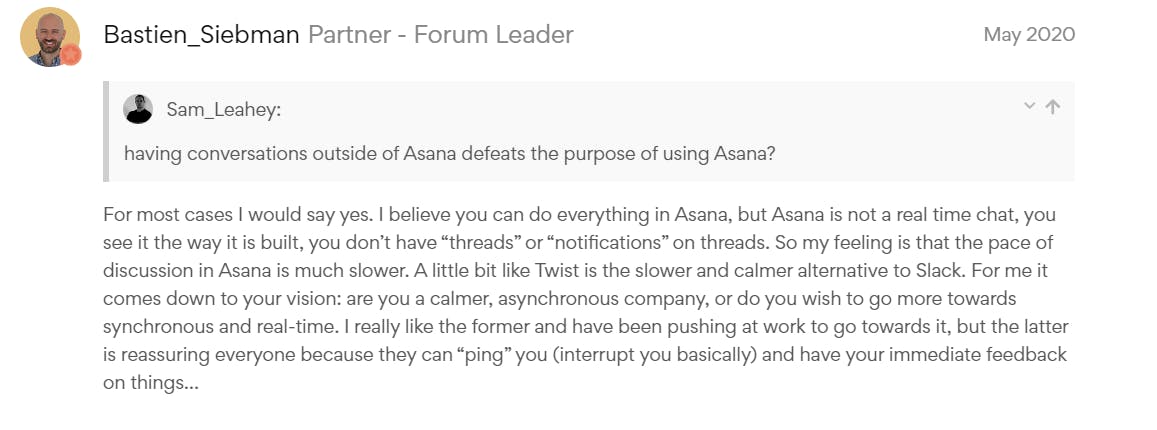
👉 With SmartTask, you never have to switch platforms to communicate with your team members.
Its native chat and instant messaging features facilitate real-time collaboration. It also supports VoIP and video calls at project and task levels and allows you to record client calls using free integrations!
No integrated CRM
Asana's lack of integrated CRM is a significant drawback for agencies and consultancies. Users must awkwardly incorporate clients as tasks or projects, and while CRM templates are available, finding suitable ones is often challenging.
👉 SmartTask, in contrast, offers a native CRM solution that lets you store and connect with contacts and streamline your client and sales pipeline. With Smarttask’s CRM you can:
- Track deal progress and clarify action points
- Predict sales accurately and see an overview of deal stages
- Manage all your customer interactions and view communication history
- Manage client service requests
- Track team performance using custom analytics
Can’t assign tasks to multiple users
Asana restricts task assignment to a single user, requiring you to create duplicate tasks for multiple assignees.
👉With SmartTask, you can assign multiple assignees (or contributors) to a task and invite vendors, clients, and third-party contractors to collaborate on projects or tasks.
Inability to schedule subtasks in the Timeline view
Asana has two notable limitations: i) It displays only 50 subtasks per task, and ii) It duplicates subtasks in the list view when they are manually added to the project timeline.
👉 SmartTask, on the other hand, displays tasks with all their subtasks and dependencies in the Timeline view (as well as all other views). You can also set a project baseline, auto-schedule dependencies, and invite others to review your progress from within the Timeline view.
Limited customization for agency workflows
Due to limited customization options for workflows and project views, Asana fails to cater to the specific needs of agencies. It also relies heavily on plugins, which can inflate costs over time.

👉SmartTask addresses these limitations by offering:
- Multiple project views that let you monitor tasks and their subtasks and dependencies.
- Custom fields for filtering and sorting tasks and generating targeted reports on team KPIs, such as client feedback, lead generation, and conversion.
- Portfolios for tracking multiple projects and their progress (in %) and identifying bottlenecks in your workflow.
- Lots of free integrations!
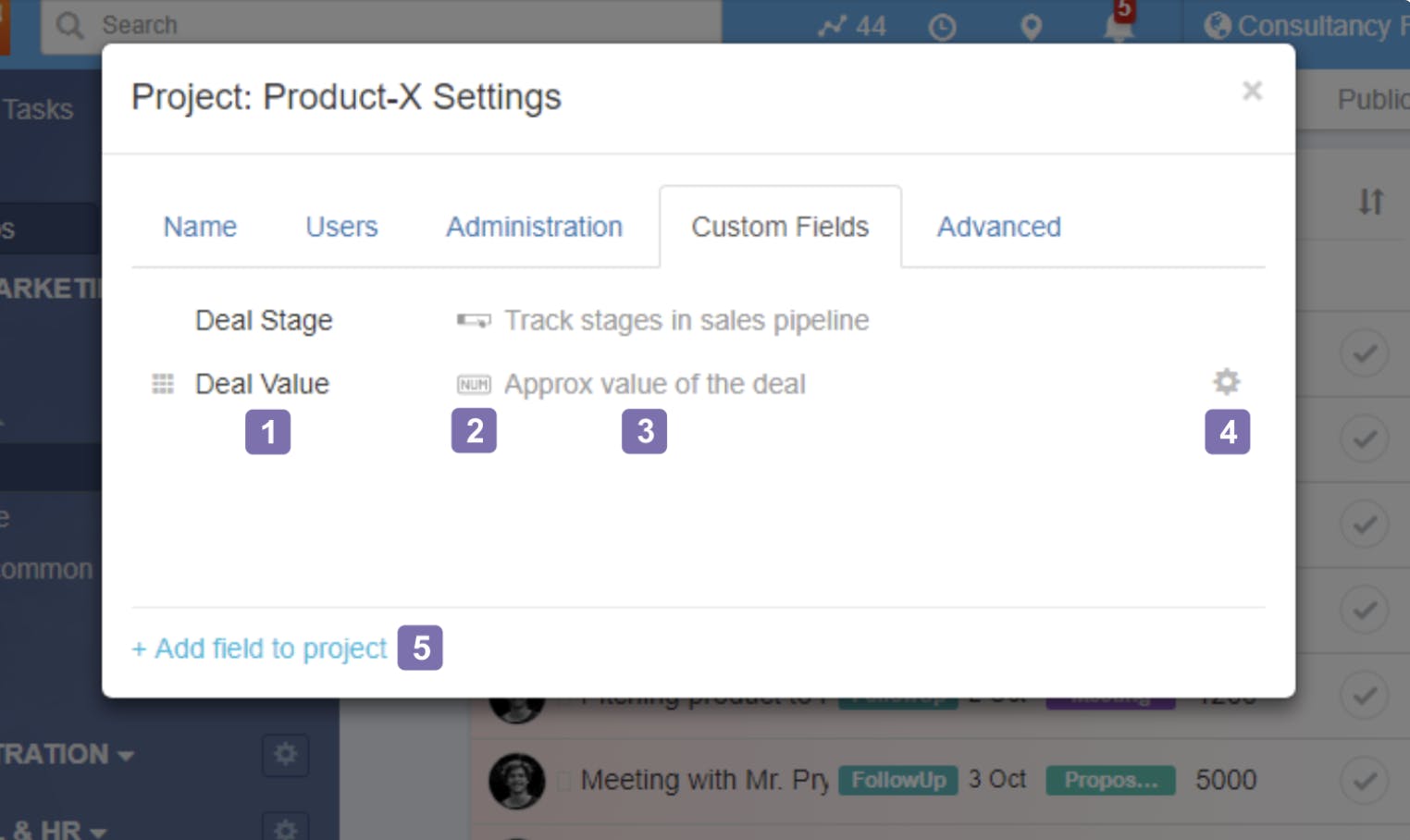
SmartTask: A Better Alternative to Asana
By now, you've gained a general understanding of SmartTask and its potential benefits for businesses looking to optimize resources, collaborate in real-time, and track team productivity.
But let’s get a clearer picture of what it has to offer:
a) Multiple Project Views: SmartTask offers multiple project views, such as Kanban, Gantt Chart, Calendar, and List views for managing project lifecycles, tracking client deliverables, and mapping out development sprints.
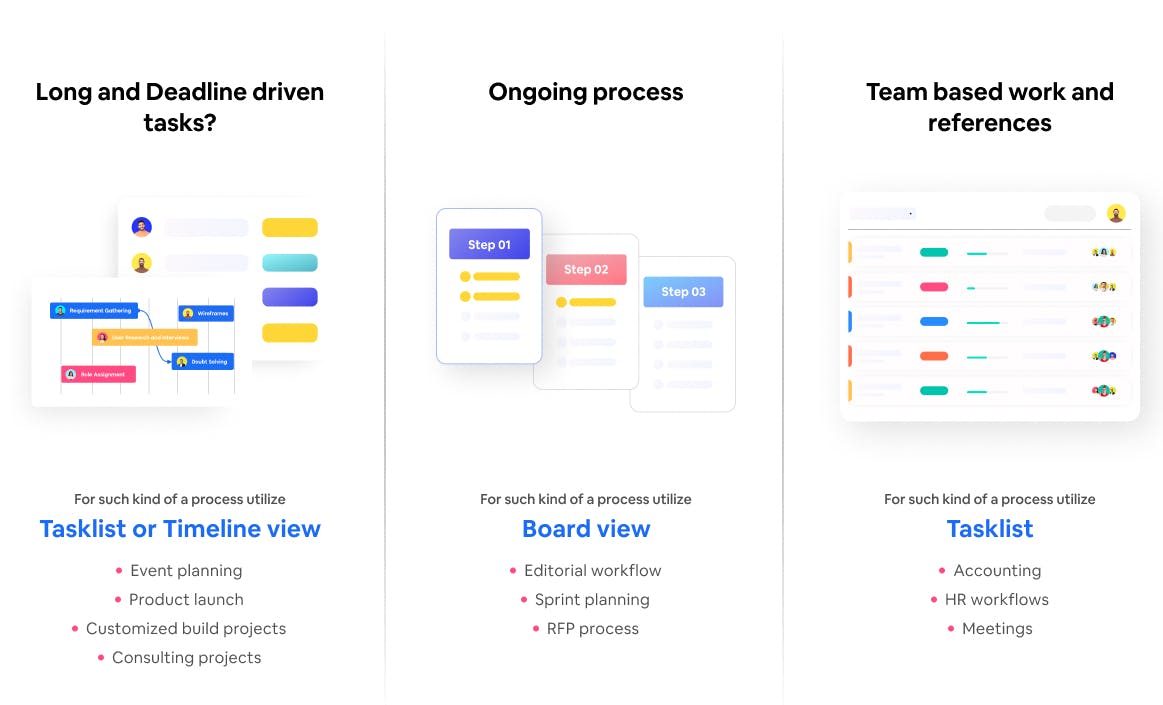
b) Task management: In SmartTask, tasks come with a rich text editor for detailed descriptions, comments for collaboration, and attachments for centralizing task information. They also support tagging people, time logging, guest access, custom fields, subtasks, and reminders.
c) Set Milestones: SmartTask lets you break complex projects into manageable milestones that can be tracked using its custom reporting features.
d) Track Multiple Client Projects: SmartTask’s portfolio feature eliminates the chaos of tracking multiple projects by providing a consolidated view of all ongoing work. It offers real-time progress updates and status information. Additionally, it presents visual representations of project progress and clear indicators to help realign focus when required.
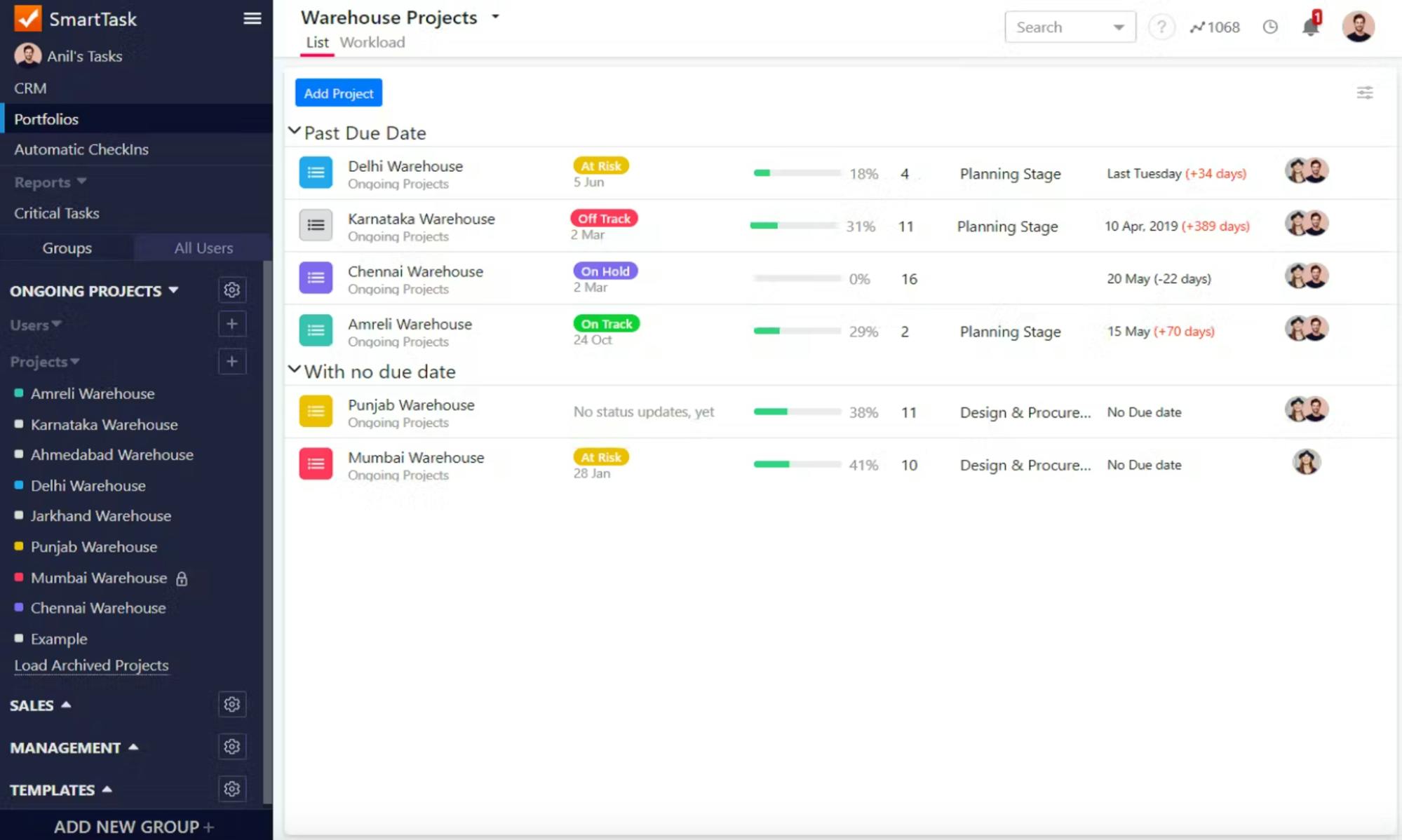
e) Estimate Project Budgets: SmartTask allows you to assign billable rates to tasks and projects, providing valuable insights into project profitability on each task and project.
f) Invite Guest Users: You can invite guest users to collaborate on projects or tasks with customizable access levels. This ensures that you foster open communication while still having control over project information.
g) Communicate in Real Time: With real-time communication features like instant messaging and video conferencing, SmartTask enables seamless collaboration with various stakeholders.
h) CRM: SmartTask features a built-in CRM for managing client relationships and tracking inquiries through the sales pipeline. It also allows you to predict sales and store client information – purchases, usage, and interaction with your team – so you can maintain a detailed communication history for each client.
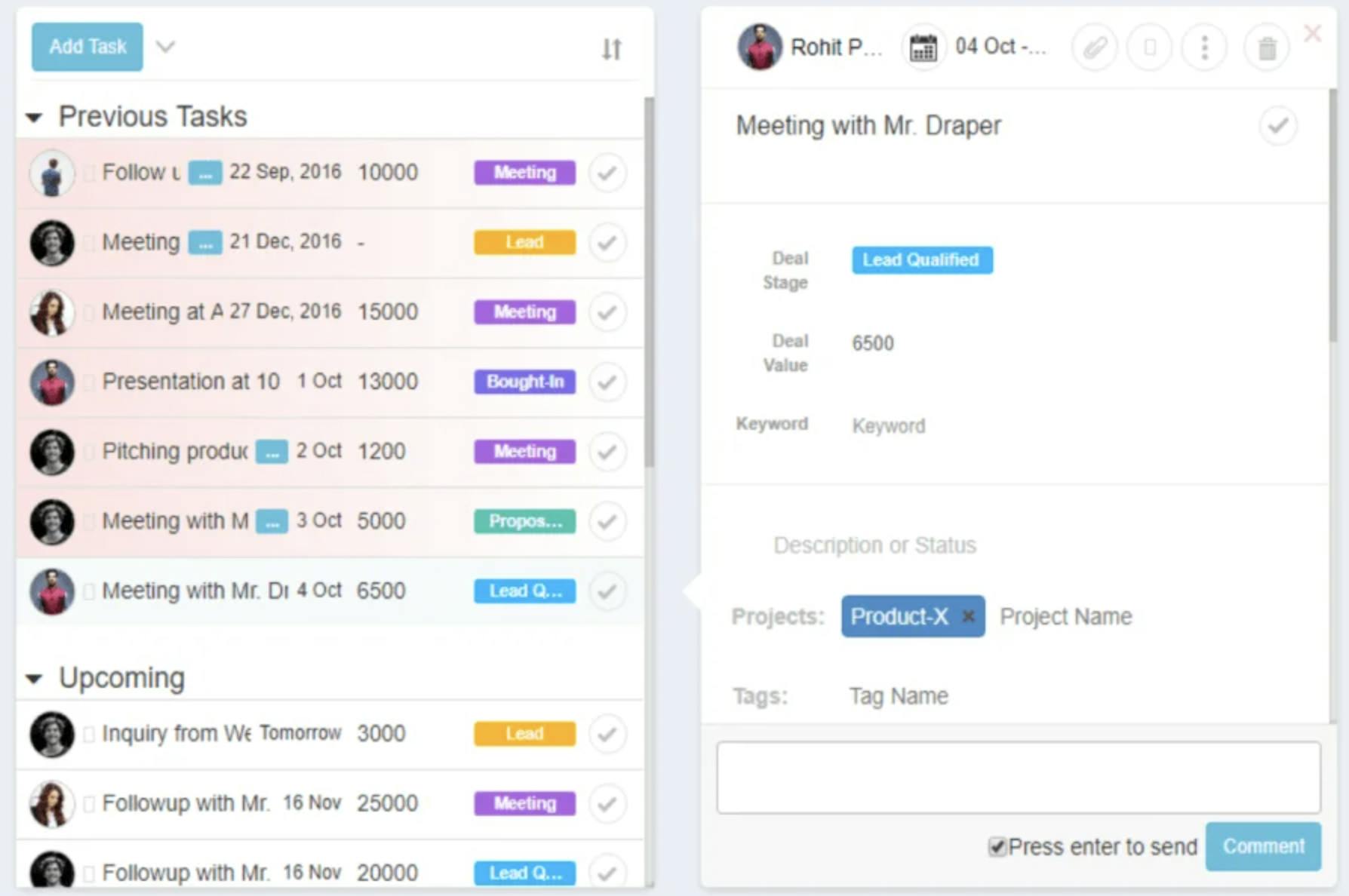
i) Client Portal: SmartTask allows you to invite and manage clients on a project and customize their access to information.
j) Customized Reports: With SmartTask, you get custom fields to filter and sort your work and generate targeted reports to capture project or client-specific data.
k) Built-In Templates: SmartTask offers a huge library of industry-specific templates to help you jumpstart a client project. It also lets you create custom templates by answering a few simple questions.
l) Discussions & Automated Check-Ins: SmartTask offers discussions and an automated check-in feature to help you brainstorm ideas with your team and share project updates with your managers.
m) 1000+ integrations: SmartTask integrates 1000+ applications, most of which are free!
n) Available on: Windows, macOS, iPhone, iPad, Android, Chrome, Safari, and Firefox.
Besides these distinct features, SmartTask offers affordable pricing plans, which start at $7.99 for Premium and $10.99 for Business, along with a Free Forever plan.
It also offers dedicated onboarding support for agencies and holistic customer support through email and chat for all users. Asana, on the other hand, only provides personalized customer support to Advanced users.
Finally…
While Asana is useful for small and medium-sized teams, it doesn't fully cater to the needs of agencies, which require comprehensive time tracking, instant messaging, robust CRM features, and client-facing functionalities.
SmartTask is a purpose-built solution designed to bridge these gaps and empower you with features that help track time meticulously, break down complex projects into manageable milestones, provide actionable insights from customizable reports, and deliver seamless client and sales support.
So why settle for a solution that meets only some of your needs?
Experience the difference with SmartTask’s smart project management solution.
Frequently Asked Questions (FAQs)
1. What is Asana Good For?
Asana is a task management tool useful for teams looking to streamline their workflows. It allows you to set goals, assign tasks, and monitor team progress to improve productivity.
2. Is Asana worth its price?
Asana pricing plans are designed to suit different business needs. While they may be suitable for some organizations, professional service providers like agencies and consultancies might find it hard to justify their costs.
These businesses have specific requirements that Asana's standard features don't fully address, necessitating the use of expensive plugins to meet their needs.
💡You Might Also Want to Check Out
👉 Monday vs Asana: 2024 Comparison




